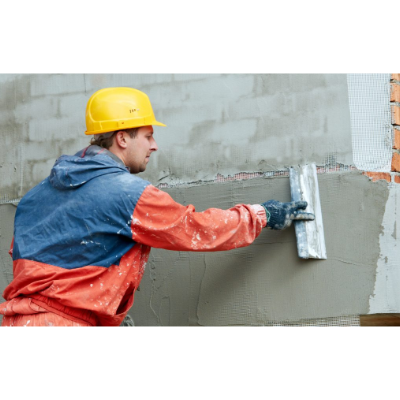What is Rendering Walls?
Rendering walls is a process of applying a layer of cement or lime-based plaster to the exterior or interior walls of a building.
The purpose of rendering is to create a smooth and durable surface that protects the walls from moisture, weathering, and other types of damage.
It can also improve the appearance of the walls and provide a base for painting or other decorative finishes. Render can be made using the following:
1 part Cement
4-5 part Plastering Sand
1 part S.B.R Bond

Step-by-Step
Here are the general steps for rendering walls:
1. Preparation: Remove any loose or damaged material on the wall surface and clean the wall to ensure that the rendering material adheres properly. Cover any adjacent surfaces or areas that need to be protected from the rendering material.
2. Application of the first coat: Apply a layer of adhesive, known as a scratch coat, to the wall surface using a trowel. The thickness of this layer can vary, but it is typically around 6mm to 10mm. The scratch coat should be allowed to dry for at least 24 hours.
3. Preparation of the second coat: Mix the rendering material according to the manufacturer's instructions. The rendering material can be cement, lime, or a combination of both. The second coat should be slightly thinner than the first coat.
4. Application of the second coat: Apply the second coat of rendering material to the wall surface, using a trowel. The thickness of this layer can vary, but it is typically around 6mm to 10mm. Use a straight edge to level the surface and ensure that it is even.
5. Finishing: Once the second coat has partially dried, use a sponge or a brush to smooth and level the surface. This will create a uniform finish. Any desired patterns or textures can be created at this stage.
6. Curing: Allow the rendering to dry completely. This can take several days or more, depending on the weather conditions and the type of rendering material used. The wall should be protected from rain or other moisture during this time.
7. Sealing: If desired, the rendered wall can be sealed with a waterproofing agent or painted with a decorative finish.







